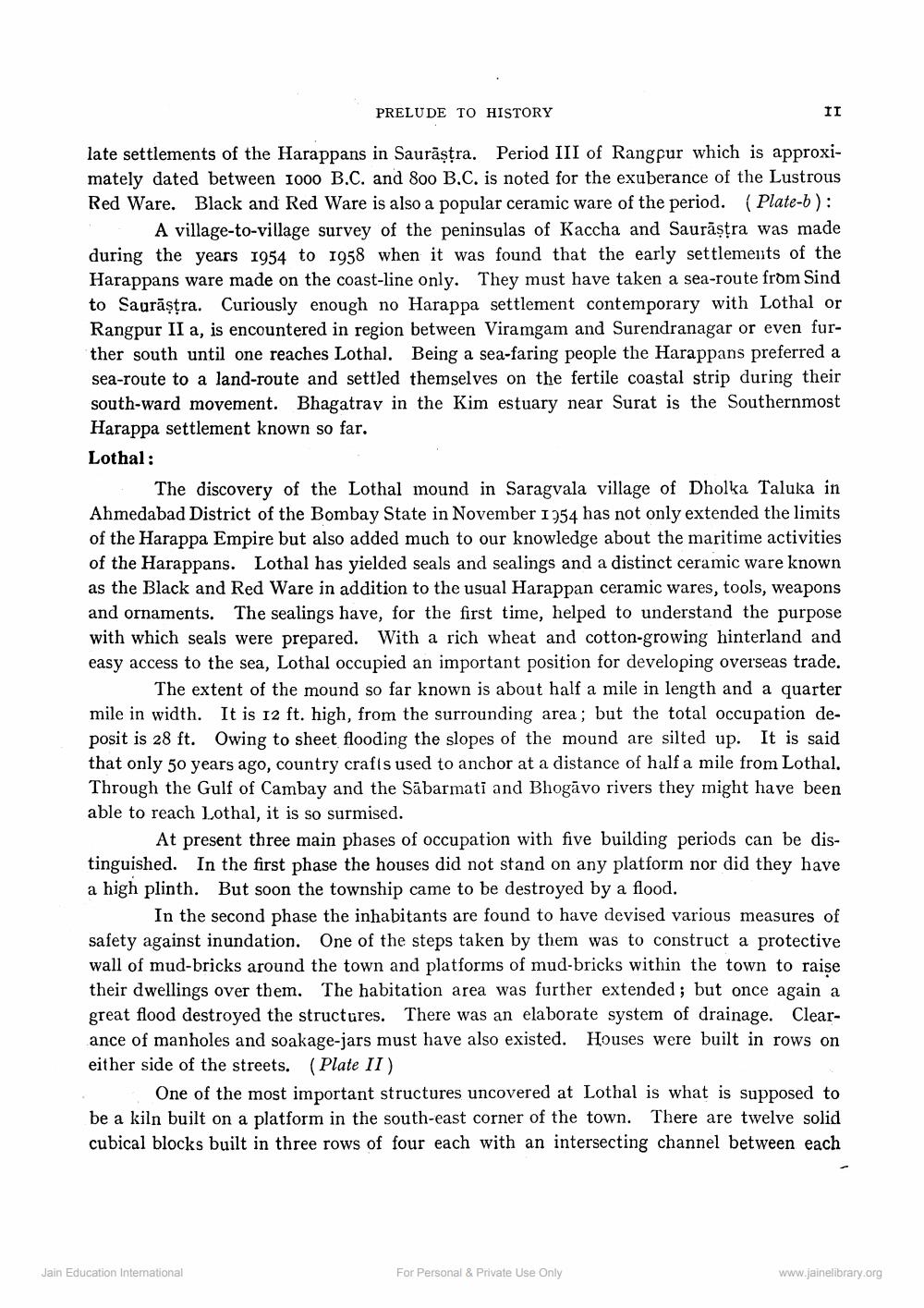________________
PRELUDE TO HISTORY
11
late settlements of the Harappans in Saurāşțra. Period III of Rangpur which is approximately dated between 1000 B.C. and 800 B.C. is noted for the exuberance of the Lustrous Red Ware. Black and Red Ware is also a popular ceramic ware of the period. (Plate-b):
A village-to-village survey of the peninsulas of Kaccha and Saurāşțra was made during the years 1954 to 1958 when it was found that the early settlements of the Harappans ware made on the coast-line only. They must have taken a sea-route from Sind to Saurāṣtra. Curiously enough no Harappa settlement contemporary with Lothal or Rangpur II a, is encountered in region between Viramgam and Surendranagar or even further south until one reaches Lothal. Being a sea-faring people the Harappans preferred a sea-route to a land-route and settled themselves on the fertile coastal strip during their south-ward movement. Bhagatray in the Kim estuary near Surat is the Southernmost Harappa settlement known so far. Lothal:
The discovery of the Lothal mound in Saragvala village of Dholka Taluka in Ahmedabad District of the Bombay State in November 1954 has not only extended the limits of the Harappa Empire but also added much to our knowledge about the maritime activities of the Harappans. Lothal has yielded seals and sealings and a distinct ceramic ware known as the Black and Red Ware in addition to the usual Harappan ceramic wares, tools, weapons and ornaments. The sealings have, for the first time, helped to understand the purpose with which seals were prepared. With a rich wheat and cotton-growing hinterland and easy access to the sea, Lothal occupied an important position for developing overseas trade.
The extent of the mound so far known is about half a mile in length and a quarter mile in width. It is 12 ft. high, from the surrounding area; but the total occupation deposit is 28 ft. Owing to sheet flooding the slopes of the mound are silted up. It is said that only 50 years ago, country crafts used to anchor at a distance of half a mile from Lothal. Through the Gulf of Cambay and the Sābarmati and Bhogāvo rivers they might have been able to reach Lothal, it is so surmised.
At present three main phases of occupation with five building periods can be distinguished. In the first phase the houses did not stand on any platform nor did they have a high plinth. But soon the township came to be destroyed by a flood.
In the second phase the inhabitants are found to have devised various measures of safety against inundation. One of the steps taken by them was to construct a protective wall of mud-bricks around the town and platforms of mud-bricks within the town to raise their dwellings over them. The habitation area was further extended; but once again a great flood destroyed the structures. There was an elaborate system of drainage. Clearance of manholes and soakage-jars must have also existed. Houses were built in rows on either side of the streets. (Plate II)
One of the most important structures uncovered at Lothal is what is supposed to be a kiln built on a platform in the south-east corner of the town. There are twelve solid cubical blocks built in three rows of four each with an intersecting channel between each
Jain Education Intemational
For Personal & Private Use Only
www.jainelibrary.org




